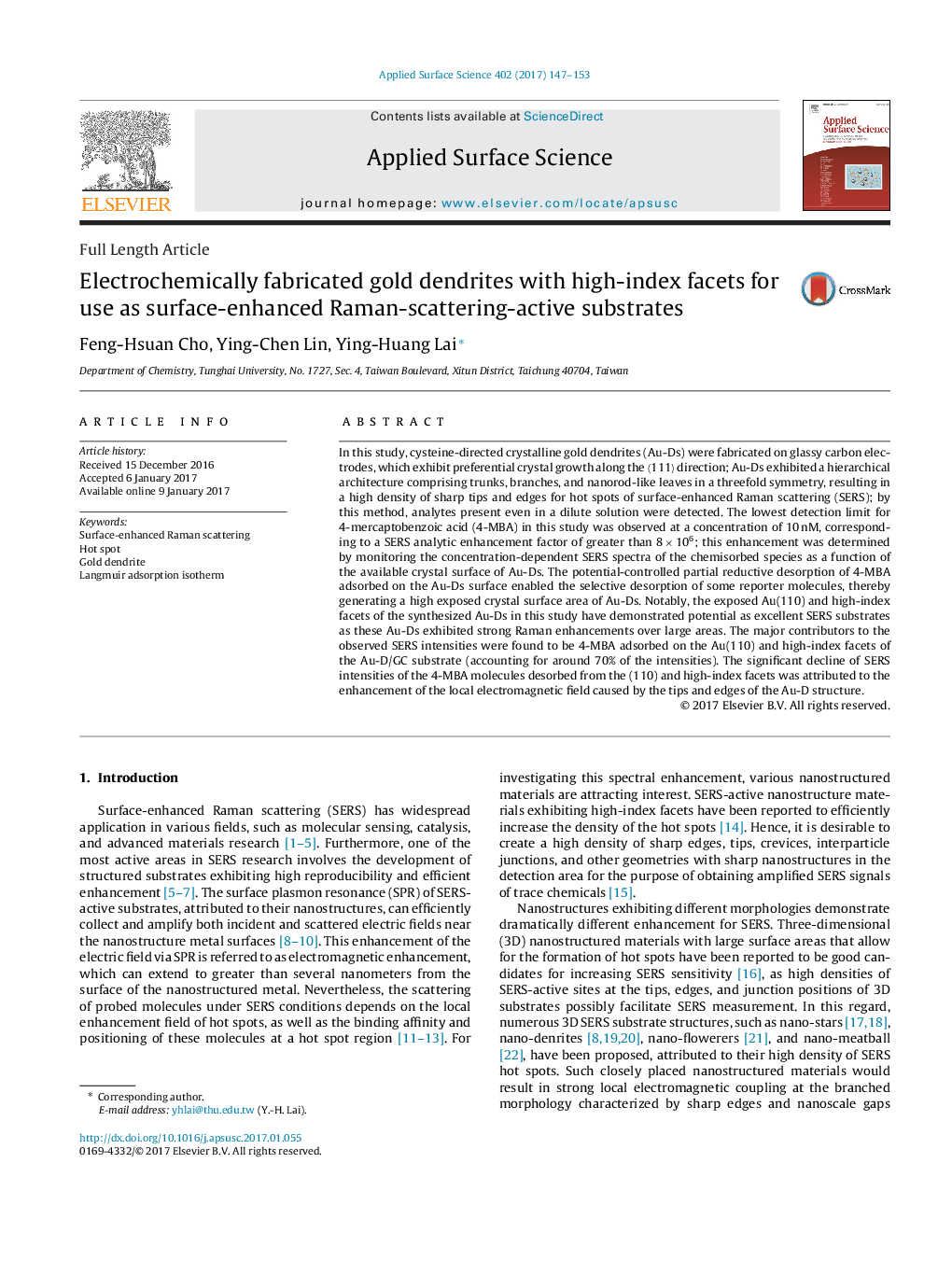| Article ID | Journal | Published Year | Pages | File Type |
|---|---|---|---|---|
| 5352254 | Applied Surface Science | 2017 | 7 Pages |
Abstract
In this study, cysteine-directed crystalline gold dendrites (Au-Ds) were fabricated on glassy carbon electrodes, which exhibit preferential crystal growth along the ã111ã direction; Au-Ds exhibited a hierarchical architecture comprising trunks, branches, and nanorod-like leaves in a threefold symmetry, resulting in a high density of sharp tips and edges for hot spots of surface-enhanced Raman scattering (SERS); by this method, analytes present even in a dilute solution were detected. The lowest detection limit for 4-mercaptobenzoic acid (4-MBA) in this study was observed at a concentration of 10Â nM, corresponding to a SERS analytic enhancement factor of greater than 8Â ÃÂ 106; this enhancement was determined by monitoring the concentration-dependent SERS spectra of the chemisorbed species as a function of the available crystal surface of Au-Ds. The potential-controlled partial reductive desorption of 4-MBA adsorbed on the Au-Ds surface enabled the selective desorption of some reporter molecules, thereby generating a high exposed crystal surface area of Au-Ds. Notably, the exposed Au(110) and high-index facets of the synthesized Au-Ds in this study have demonstrated potential as excellent SERS substrates as these Au-Ds exhibited strong Raman enhancements over large areas. The major contributors to the observed SERS intensities were found to be 4-MBA adsorbed on the Au(110) and high-index facets of the Au-D/GC substrate (accounting for around 70% of the intensities). The significant decline of SERS intensities of the 4-MBA molecules desorbed from the (110) and high-index facets was attributed to the enhancement of the local electromagnetic field caused by the tips and edges of the Au-D structure.
Related Topics
Physical Sciences and Engineering
Chemistry
Physical and Theoretical Chemistry
Authors
Feng-Hsuan Cho, Ying-Chen Lin, Ying-Huang Lai,
